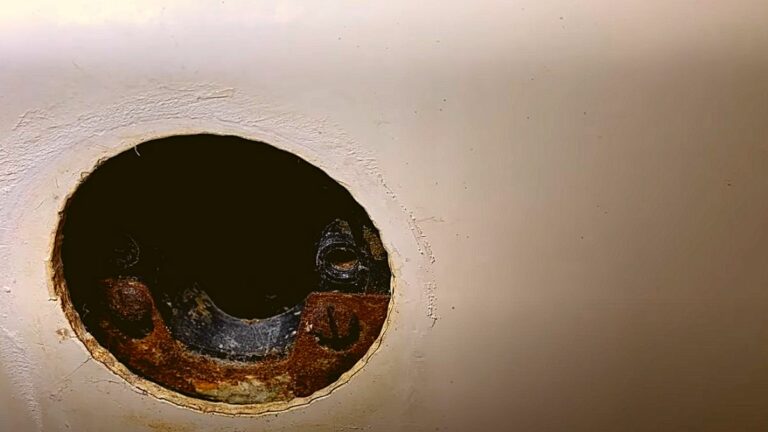Is Pink Mold in Shower Dangerous
You might worry if pink mold in your shower is dangerous, but it’s actually a bacteria called Serratia marcescens, not true mold. It thrives in warm, moist spots and feeds on soap scum. While pink mold can cause mild respiratory issues or allergies, it usually isn’t highly toxic. Prompt cleaning and good ventilation keep it from becoming a bigger problem. If you want to understand how to spot, remove, and prevent it effectively, there’s more to explore.
What Is Pink Mold and How Does It Form
Although it’s commonly called pink mold, this growth isn’t actually mold but a type of bacteria called Serratia marcescens. You’ll usually spot it in moist areas like your shower, where water and soap residues create the perfect environment for it to thrive.
This bacteria forms a slimy, pinkish film that clings to surfaces like tile grout, shower curtains, and sinks. It feeds on soap scum, shampoo, and dead skin cells left behind, so if you don’t clean regularly, it can multiply quickly.
You might notice it more in places with poor ventilation or where water tends to pool. Understanding what it’s and how it forms helps you tackle it effectively before it spreads further.
Differences Between Pink Mold and Other Bathroom Molds
When you spot pink mold in your bathroom, it’s important to know how it differs from other common molds like black or green mold. Pink mold isn’t actually mold; it’s a type of bacteria called Serratia marcescens.
You’ll notice it appears as slimy, pinkish or reddish patches, especially in damp areas like shower corners. Unlike black mold, which can produce harmful spores, pink mold doesn’t release spores but thrives on soap scum and moisture.
Green mold often grows on grout or wallpaper, while pink mold prefers wet surfaces with organic material. While pink mold isn’t as toxic or invasive as black mold, you should still clean it promptly to prevent buildup and maintain a healthy bathroom environment.
Health Risks Associated With Pink Mold Exposure
Because pink mold is actually a type of bacteria called Serratia marcescens, it can pose certain health risks, especially if you have a weakened immune system or respiratory issues.
When you breathe in or come into contact with this bacteria, it may trigger infections like urinary tract infections, respiratory problems, or even wound infections.
If you have asthma or allergies, pink mold can worsen your symptoms, causing coughing, sneezing, or irritation.
While healthy individuals mightn’t face severe issues, prolonged exposure can still lead to discomfort or minor infections.
To protect yourself, it’s important to clean pink mold promptly and maintain good bathroom hygiene.
Ignoring it can increase your chances of experiencing these health problems, so addressing it early helps keep your environment safe.
Factors That Encourage Pink Mold Growth in Showers
Understanding the health risks linked to pink mold highlights why you should keep an eye on its growth conditions. Pink mold thrives in moist, warm environments, so your shower provides the perfect breeding ground. When you leave your shower wet and poorly ventilated, you encourage this mold to grow.
Soap scum and body oils also feed pink mold, so regular cleaning is essential. If your shower has cracks or grout that retains water, mold finds even more spots to settle. Using a squeegee or towel to dry surfaces after each use can make a big difference.
Identifying Pink Mold in Your Bathroom
Although pink mold might look harmless at first glance, you need to recognize its presence early to prevent it from spreading. Pink mold often appears as slimy, pinkish-orange stains or spots on shower walls, grout, tiles, and even shower curtains.
It thrives in damp, warm areas, so check corners, crevices, and around drains carefully. Unlike other molds, pink mold isn’t always fuzzy; it can look more like a slick film.
If you notice a recurring pink discoloration that won’t wash away with regular soap, it’s likely pink mold. Pay attention to musty or sour odors, which may also signal mold growth.
Catching pink mold early allows you to address it before it becomes a bigger problem in your bathroom.
Effective Cleaning Methods to Remove Pink Mold
If you spot pink mold in your shower, acting quickly is key to stopping it from spreading further. Start by mixing equal parts water and white vinegar in a spray bottle. Spray the affected areas thoroughly and let it sit for 10-15 minutes.
Then, scrub with a brush or sponge to remove the mold. For tougher stains, a paste of baking soda and water works well—apply, scrub, and rinse. Avoid using bleach regularly, as it can damage grout and surfaces over time.
After cleaning, rinse the area with warm water and dry it completely to remove moisture. Wearing gloves and ensuring proper ventilation during cleaning will protect you and help the process go smoothly.
Consistent cleaning helps you eliminate pink mold effectively.
Preventative Measures to Stop Pink Mold From Returning
To keep pink mold from coming back, you need to control moisture and improve ventilation in your bathroom. Always use the exhaust fan or open a window during and after showers to reduce humidity.
Wipe down wet surfaces regularly, especially tiles, grout, and shower curtains. Consider using a squeegee to remove excess water from walls and doors.
Fix any leaks promptly, since even small drips create perfect conditions for mold growth. Use mold-resistant shower curtains or liners and wash them often.
Keep your bathroom clean by regularly scrubbing with mold-inhibiting cleaners. Avoid leaving damp towels or bath mats lying around.
When to Seek Professional Mold Remediation Services
When pink mold covers a large area or keeps coming back despite your efforts, it’s time to call in professional mold remediation services.
You should seek help if the mold spreads over more than 10 square feet or hides in hard-to-reach places like behind walls or under tiles.
Professionals have the tools and expertise to detect and remove mold safely, preventing it from damaging your home or causing health issues.
If you notice persistent musty odors, unexplained allergic reactions, or respiratory problems, don’t wait.
Also, if your attempts at cleaning haven’t stopped mold growth, experts can assess and fix underlying moisture problems.
Acting promptly helps protect your health and prevents costly repairs down the line.
Don’t hesitate to get professional help when pink mold becomes a serious concern.
Impact of Pink Mold on Indoor Air Quality
Although pink mold might seem harmless, it can significantly affect your indoor air quality. When pink mold grows in your shower, it releases spores and microbial volatile organic compounds (MVOCs) into the air. These airborne particles can irritate your respiratory system, especially if you have allergies or asthma.
You might notice increased coughing, sneezing, or throat irritation when spending time in affected areas. Additionally, prolonged exposure to mold spores may weaken your immune system, making you more susceptible to infections.
To maintain healthy indoor air, it’s essential to address pink mold growth promptly. Regular cleaning, proper ventilation, and controlling moisture levels can help reduce mold spores in the air, improving the overall quality of the environment where you live and breathe.
Frequently Asked Questions
Can Pink Mold Grow on Shower Curtains?
Yes, pink mold can grow on shower curtains because they stay damp and warm. You’ll want to clean or replace curtains regularly to prevent buildup, keeping your bathroom fresh and reducing any potential health risks effectively.
Is Pink Mold the Same as Rust Stains?
No, pink mold isn’t the same as rust stains. You’ll find pink mold is a type of bacteria or fungus, while rust stains come from iron reacting with water. They look different and need different cleaning methods.
Does Pink Mold Affect Grout Color Permanently?
Pink mold usually doesn’t affect grout color permanently if you clean it promptly. If left too long, it might cause some staining. You should scrub regularly and use mold-resistant sealant to keep your grout looking fresh.
Can Pets Cause Pink Mold in Bathrooms?
Yes, pets can contribute to pink mold in bathrooms by bringing in bacteria and moisture on their fur or paws. You should clean regularly and improve ventilation to prevent mold growth caused by pet-related humidity and dirt.
Is Pink Mold Harmful to Plants Near the Shower?
Pink mold near your shower generally isn’t harmful to plants. However, it indicates moisture that could encourage other harmful fungi or bacteria. Keep your bathroom dry to protect both your plants and your space.
Conclusion
Pink mold in your shower isn’t usually harmful like black mold, but it can still cause irritation and allergies. You’ll want to clean it regularly and keep your bathroom dry to prevent it from coming back. If you notice persistent growth or health symptoms, don’t hesitate to call a professional. Taking these steps helps protect your indoor air quality and keeps your bathroom safe and fresh for you and your family.


